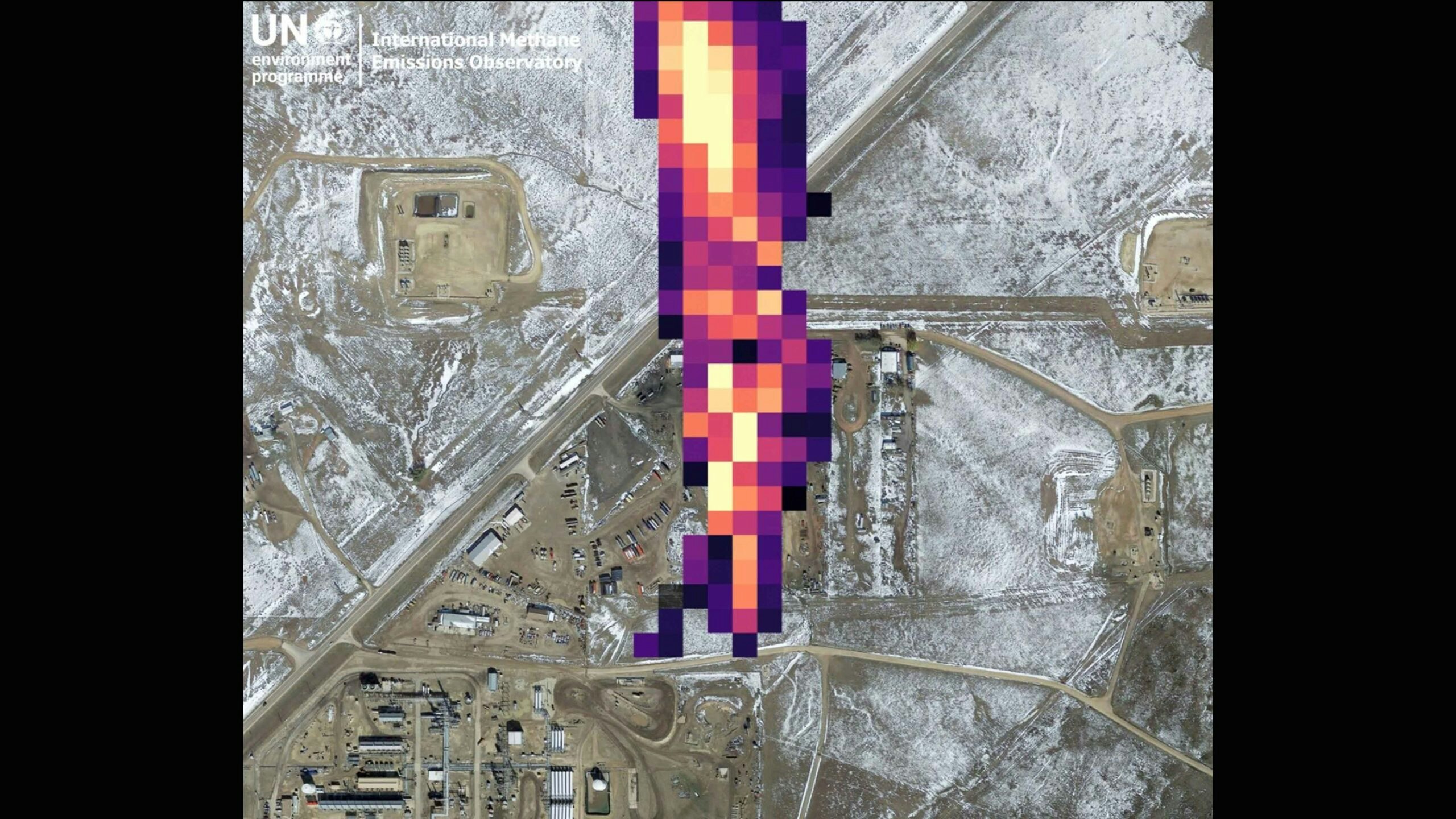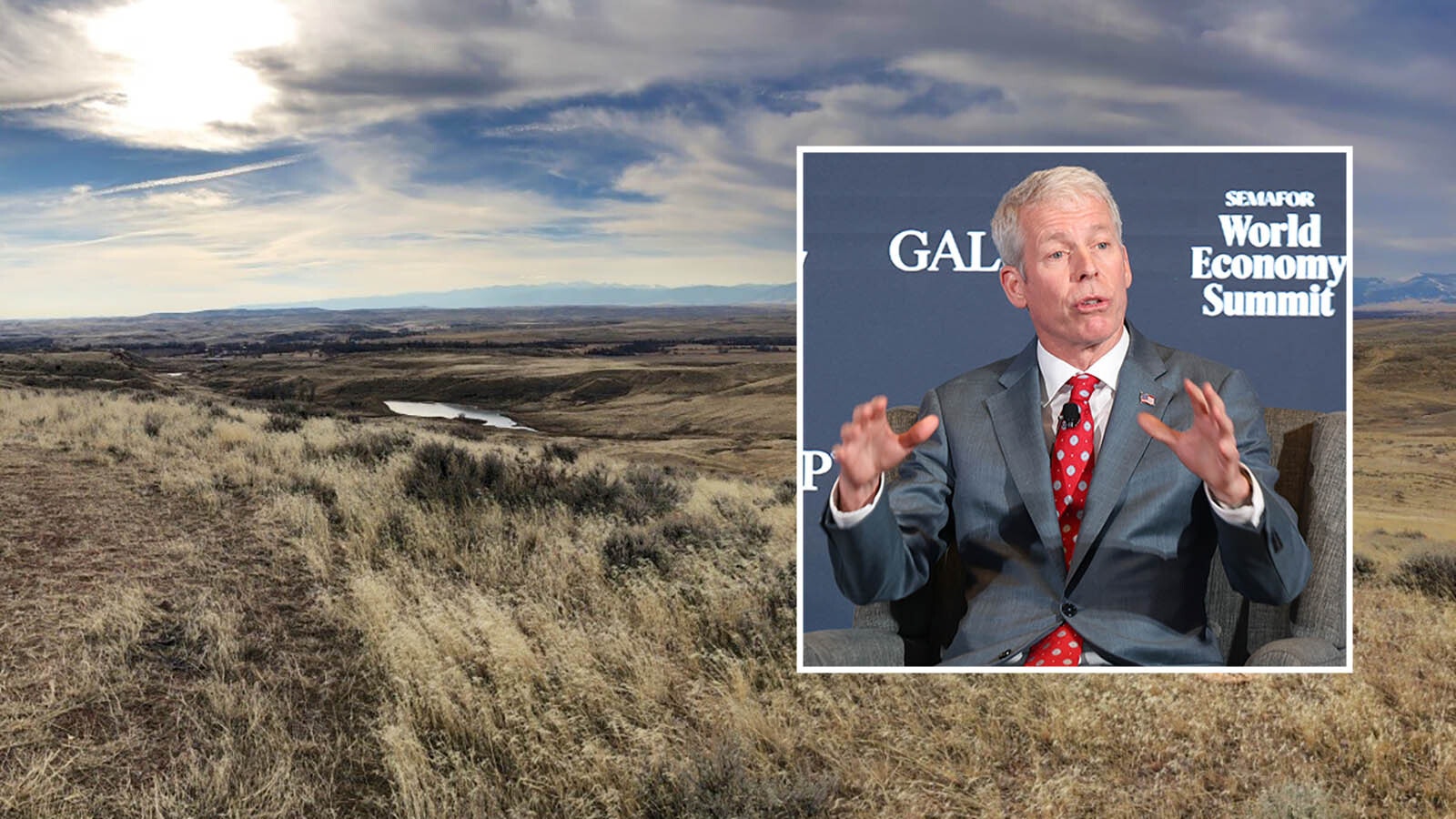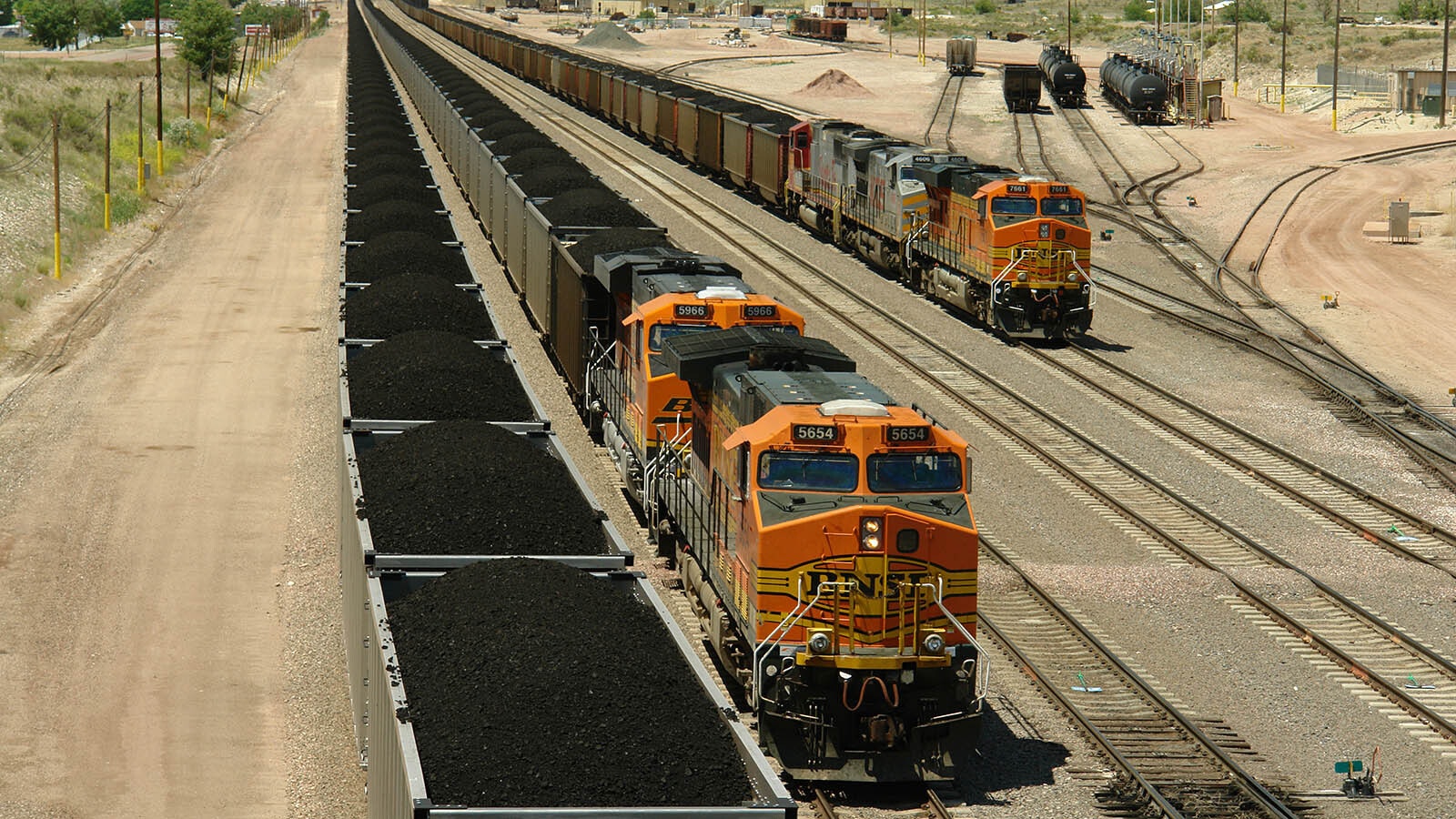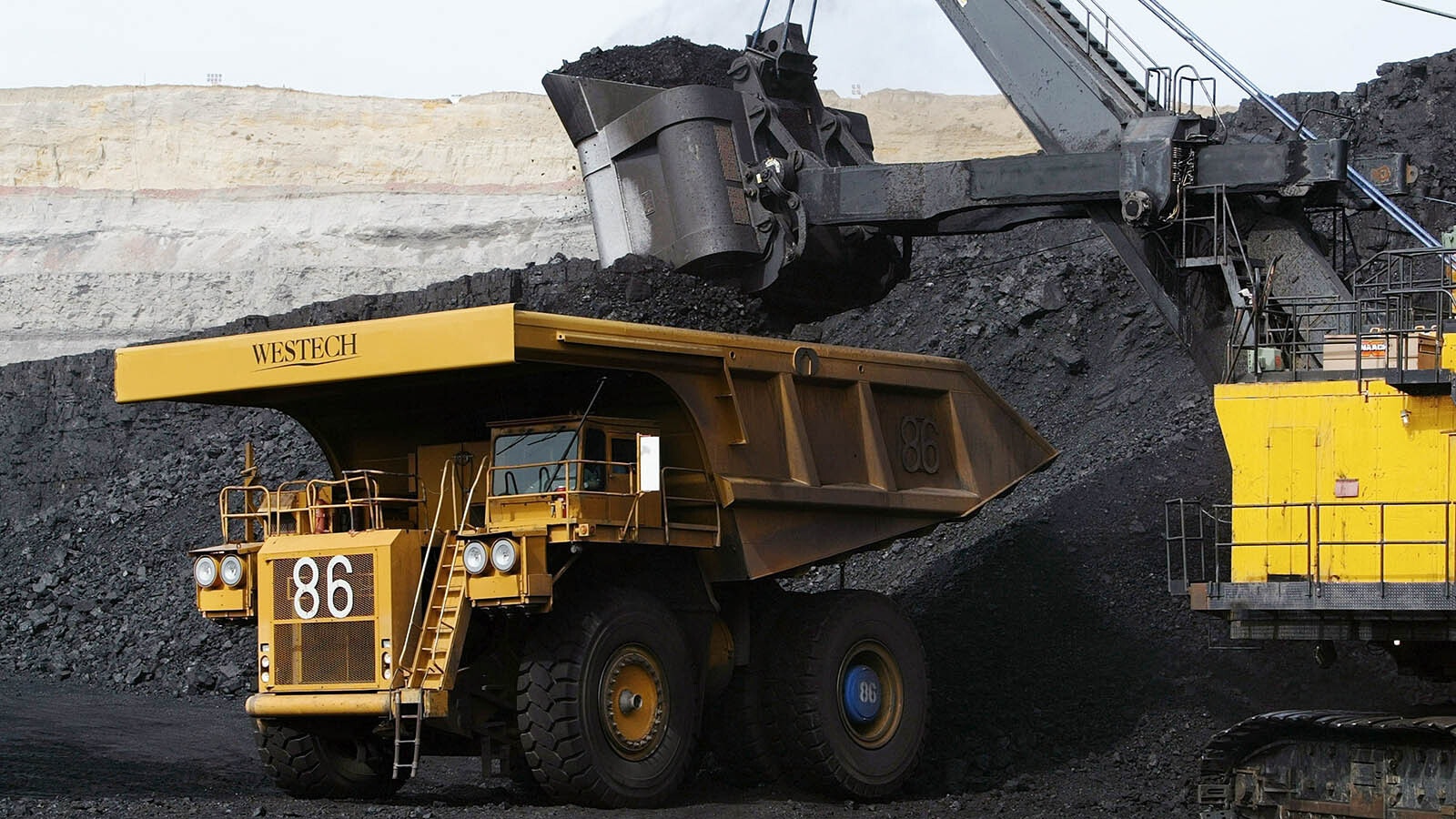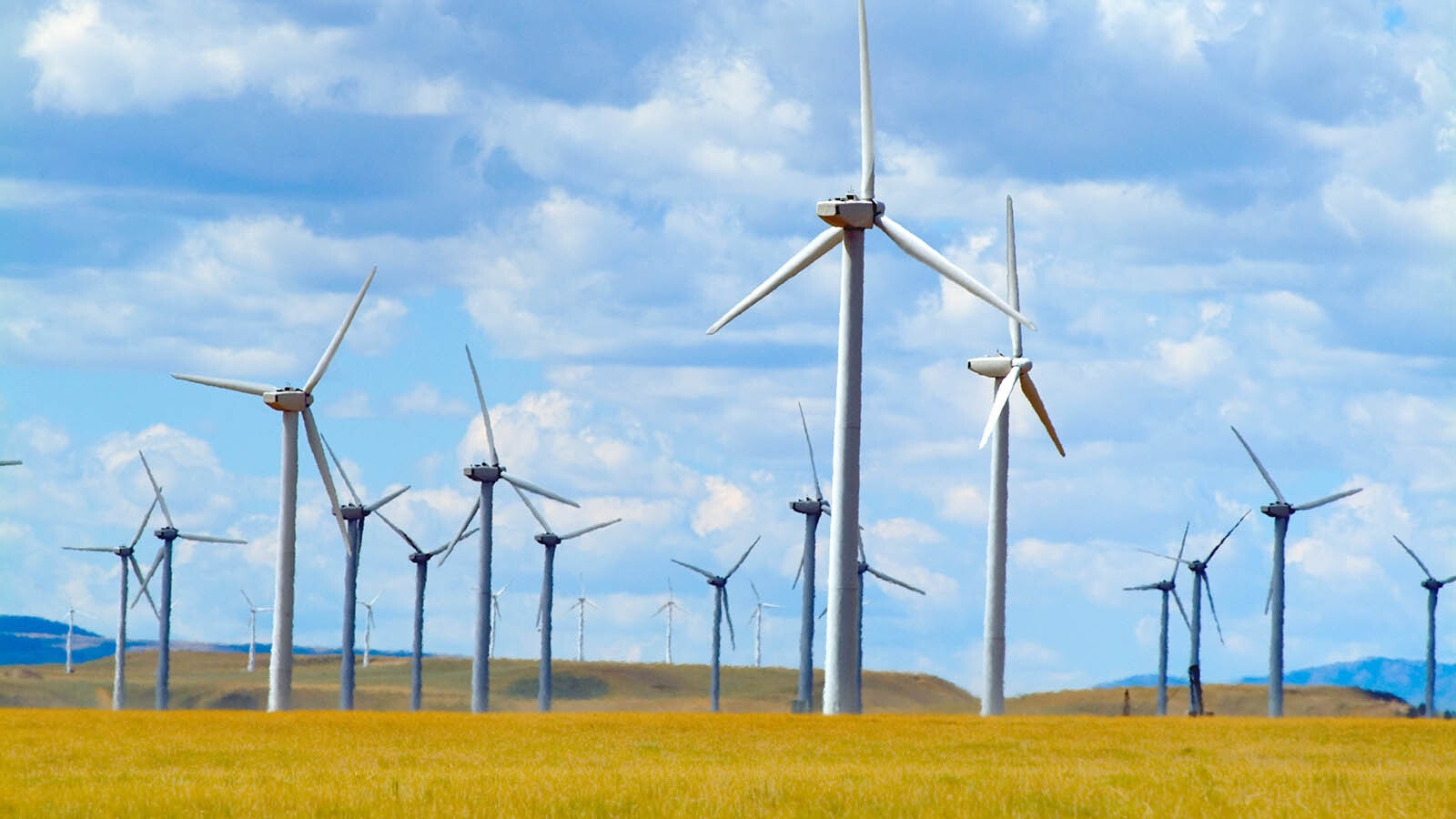A long cloud of methane erupted over the Douglas Gas Plant in December. Bloomberg reports that Tallgrass Energy, which owns the facility, told the Wyoming Department of Environmental Quality that the company vented a total of 2.1 tons of methane over a 18-hour period on Dec. 6 and Dec. 7.
Intentional Release
According to Steven Davidson, a spokesperson for Tallgrass Energy, the release was part of a safety operation.
“This was an intentional release done to ensure the safe and reliable operations of our facilities and conducted in accordance with regulatory requirements,” Davidson told Cowboy State Daily.
A methane cloud 4.6 miles long came from the Tallgrass facility during the releases, according to Bloomberg.
Due to the time in which the satellite was over the facility during its orbits of the Earth, researchers looking at the satellite data were unable to verify how long the release lasted or the total amount of methane that was released.
According to the reports that Tallgrass filed with the Wyoming Department of Environmental Quality, there were five releases beginning on Dec. 6 at 9:34 p.m. The last release was on Dec. 7 at 3:30 p.m.
In emails obtained by Bloomberg, Tallgrass told the DEQ that it had detected high oxygen levels during a maintenance project. The company hadn’t conclusively determined the source of the oxygen levels, but they believe the pipeline that was worked on wasn’t evacuated of residual oxygen.
Weather Impacts
The head of the International Methane Emissions Observatory told Bloomberg that its geospatial scientists had analyzed the satellite data and concluded that the emissions rates were higher than the company reported.
Meteorologist Don Day told Cowboy State Daily that if winds were particularly high at the time of the release, it would lower the rate by which a methane release is dispersed.
Day said winds peaked at 31 miles per hour on Dec. 6, but that was just its top speed during the entire 24-hour period. Since the first releases occurred at night, which is when wind speeds are typically at their lowest, there wasn’t likely much wind at that time.
“So there would not have been a quick dispersal because of the weather,” Day said.
There wasn’t the kind of inversion layer, either, Day said, where the methane would have been trapped in the area.
“Conversely, at the same time, it wasn’t one of those high wind event days either, to where it would have blown away really quick. It’s somewhere in between,” Day said.
Emission Comparisons
Methane is considered to have a greater impact on global warming than carbon dioxide.
Most estimates put methane as having 25 times the global warming potential of carbon dioxide.
So, the 2.1 tons released at the Tallgrass facility was the equivalent of about 50 tons of carbon dioxide emissions.
For comparison, according to Climate Trace, the Casper-Natrona County International Airport produced 989,000 tons of carbon dioxide in 2021. The Cheyenne Landfill produced nearly 74,000 tons of carbon dioxide in 2021.
The Dry Fork Station, which is the cleanest coal-fired electrical generation plant in the nation, produces 2.7 million tons of CO2 annually.

